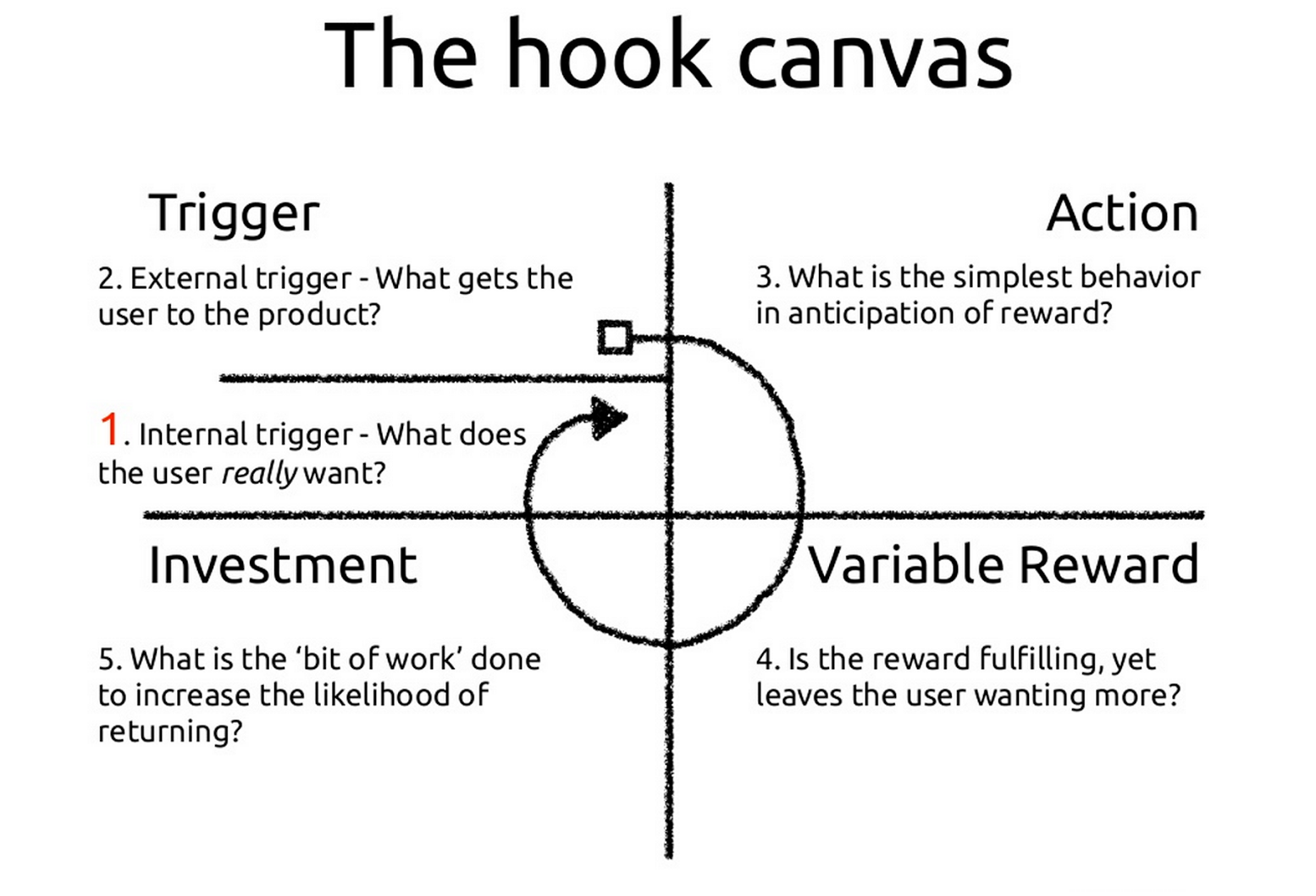2014 - Hooked
Product
Nir Eyal and Ryan Hoove
Summary
- Habit-forming: the more you use, the broader benefits you receive.
- Painkiller vs. Vitamin.
- New habits, which are sparked by external triggers but associated with internal triggers, keep users hooked.
- An action will occur when motivation, ability, trigger are present and in sufficient degrees.
- Provide variable rewards — the ‘variability’ boosts retention.
- When people invest more time and effort into a product or service, they value it more.
- Two important product questions:
- Five fundamental questions for Hook model:

Image: nirandfar.com
Habit-forming: the more you use, the broader benefits you receive.
- A habit-forming product is to solve the user’s pain by creating an association to identify the company’s product or service as the source of relief.
Painkiller vs. Vitamin.
- Painkillers solve an obvious need, relieving a specific pain, and often have quantifiable markets. On the other hand, Vitamins appeal to users’ emotional rather than functional needs. Habit-forming technologies seem to offer nice-to-have vitamins first, but once the habit is formed, they provide an ongoing pain remedy.
New habits, which are sparked by external triggers but associated with internal triggers, keep users hooked.
Paid external triggers are generally used to acquire new users. E.g., Ads, SEO Marketing.
Earned external triggers drive ongoing user acquisition, but they are short-lived. E.g., Favorable press mentions, hot viral videos, featured app store placements.
Relationship external triggers are like one person telling others about the product.
Owned external triggers prompt repeat engagement until the habit is formed. E.g., Badging, Subscriptions, Push Notifications.
Internal trigger is the user’s itch. Emotions, particularly negative ones, are powerful internal triggers.
An action will occur when motivation, ability, trigger are present and in sufficient degrees.
Improve ability: significantly reduces the steps to complete a task will enjoy high adoption rates.
Motivation tricks: scarcity effects — the appearance of scarcity affected their perception of value.
Motivation tricks: framing effects — mind takes shortcuts informed by our surroundings to make quick judgments.
Motivation tricks: endowed progress effects — increases motivation as people believe they are nearing a goal.
Provide variable rewards — the ‘variability’ boosts retention.
Products must have an ongoing degree of novelty to hold our attention. When we encounter something outside the norm, we suddenly become aware of it again.
Our brains are adapted to seek rewards that make us feel accepted, attractive, important, and included, and competent.
People pursue material resources and information.
Examples: social connectedness, gamification.
When people invest more time and effort into a product or service, they value it more.
Enhanced rewards from investments that users put into the product increase the likelihood they will use it again (E.g., content, followers, reputations, skills, levels).
For example, Pinterest users invest in the site every time they pin an image of their own, repine someone else’s image, comment on, or like a piece of content on the site. Each of these small investments gives Pinterest data to tailor the website to each user’s taste. Same for LinkedIn, Youtube, Netflix, Instagram, Facebook, etc.
Two important product questions:
“Would you use it?” — the answer must be “yes.”
“Does it help users achieve their desired goals?”
Five fundamental questions for Hook model:
Internal TriggerWhat do users want? What pain is your product relieving?External TriggerWhat brings users to your service?ActionWhat is the simplest action users take in anticipation of reward, and how can you simplify your product to make this action easier?Variable RewardsAre users fulfilled by the reward yet left wanting more?InvestmentWhat small investment do users make in your product with an expectation of enjoying a better experience in the future? Does it load the next trigger and store value to improve the product with use?